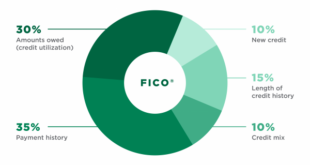Credit Score Chart: Ranges Impact and Ways to Improve. A credit score chart is an essential tool for understanding where you stand financially and how lenders perceive your creditworthiness. Knowing your credit score range can help you qualify for loans, credit cards, and better interest rates. In this comprehensive guide, we will explore the different credit score ranges, their impact, and effective ways to improve your score.
What Is a Credit Score Chart?
A credit score chart is a visual representation of different credit score ranges, typically categorized from poor to excellent. Credit scores are numerical values that range from 300 to 850, calculated by credit bureaus using factors such as payment history, credit utilization, and length of credit history.
Credit Score Ranges and Their Meaning
Understanding the different credit score ranges helps you determine where you stand and what you need to do to improve your financial health.
| Credit Score Range | Category | Impact on Borrowing |
|---|---|---|
| 300 – 579 | Poor | High risk, difficult to get approved for credit. |
| 580 – 669 | Fair | Moderate risk, may qualify for some loans but with high interest rates. |
| 670 – 739 | Good | Low risk, eligible for most credit options. |
| 740 – 799 | Very Good | Very low risk, access to better interest rates. |
| 800 – 850 | Excellent | Minimal risk, best interest rates and credit terms. |
Factors That Affect Your Credit Score
Your credit score is determined by multiple factors. Here are the key elements that influence your credit score:
- Payment History (35%) – Making timely payments on loans and credit cards is crucial.
- Credit Utilization (30%) – The amount of credit used compared to your total credit limit.
- Length of Credit History (15%) – The longer your credit history, the better.
- Credit Mix (10%) – Having a variety of credit types (e.g., credit cards, mortgages) helps.
- New Credit Inquiries (10%) – Too many hard inquiries can lower your score temporarily.
How Your Credit Score Impacts Your Financial Life
Your credit score affects more than just your ability to get a loan. Here’s how it impacts your financial well-being:
- Loan Approvals – Higher scores lead to higher approval rates.
- Interest Rates – A good score qualifies you for lower interest rates, saving money.
- Credit Card Offers – A higher score means better rewards and lower fees.
- Housing Opportunities – Landlords often check credit scores before approving rental applications.
- Employment Opportunities – Some employers review credit scores when hiring for financial positions.
How to Improve Your Credit Score
Improving your credit score takes time, but consistent effort can yield positive results. Here are ten practical tips:
- Pay bills on time to maintain a positive payment history.
- Keep credit card balances low to improve credit utilization.
- Avoid opening too many new credit accounts at once.
- Check your credit report regularly for errors and dispute inaccuracies.
- Keep old accounts open to lengthen your credit history.
- Diversify your credit mix with different types of credit accounts.
- Pay off debts instead of moving them around.
- Limit hard inquiries on your credit report.
- Set up automatic payments to prevent missed due dates.
- Seek professional financial advice if struggling with credit issues.
FAQs About Credit Score Charts
- What is the best credit score range?
- The best range is 800-850 (Excellent), as it provides access to the best financial products.
- How often should I check my credit score?
- You should check your credit score at least once a year, or before applying for credit.
- Can checking my credit score lower it?
- No, checking your own credit score is considered a soft inquiry and does not affect your score.
- How long does it take to improve a poor credit score?
- It depends on your financial habits, but consistent effort can show results in 6-12 months.
- Does closing a credit card affect my score?
- Yes, it can lower your score by reducing your credit history length and increasing utilization.
- What is the fastest way to increase my credit score?
- Paying down high credit card balances and making on-time payments are the fastest methods.
- Does having multiple credit cards help my score?
- Yes, if managed properly, multiple accounts can improve your credit mix and utilization.
- Can I get a mortgage with a fair credit score?
- Yes, but you may face higher interest rates compared to those with good or excellent credit.
- What should I do if I find an error on my credit report?
- Dispute the error with the credit bureau immediately to have it corrected.
- Does paying off collections improve my credit score?
- Yes, though the impact varies, paid collections are better than unpaid ones.
Conclusion
A credit score chart is a powerful tool to assess your financial standing and make informed decisions. Understanding the different credit score ranges and their impact can help you manage your finances effectively. By following best practices such as making timely payments, reducing credit utilization, and checking your credit report regularly, you can improve your score and access better financial opportunities.
Whether you’re looking to buy a home, get a new credit card, or secure a personal loan, maintaining a good credit score is essential. Start implementing these strategies today to boost your creditworthiness and achieve your financial goals.
 credit.suarajatim.com
credit.suarajatim.com
